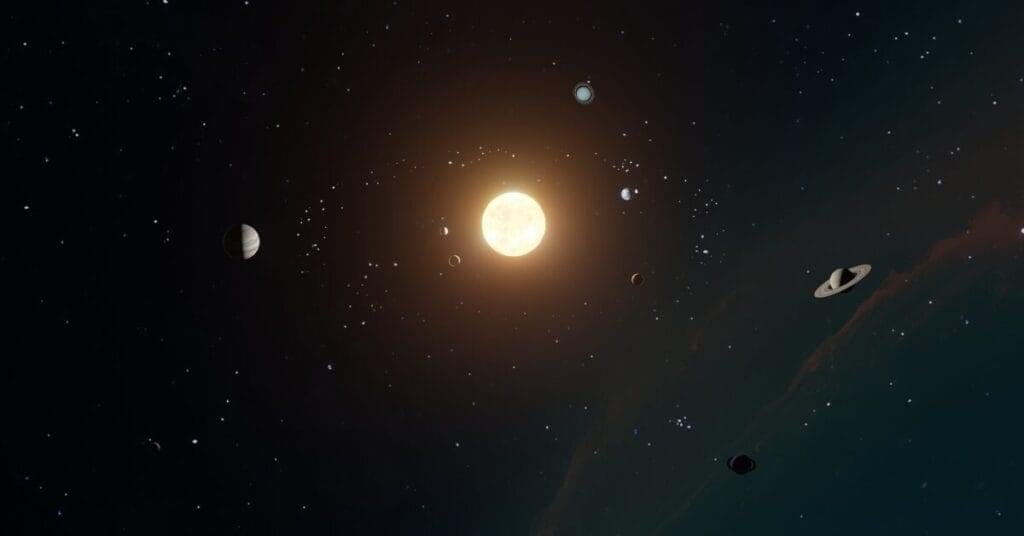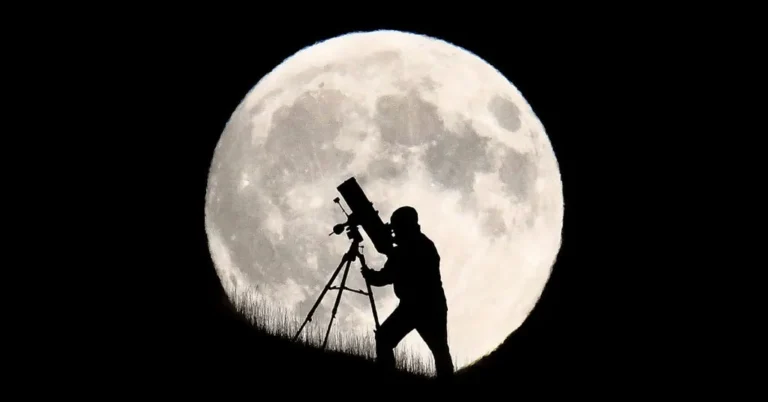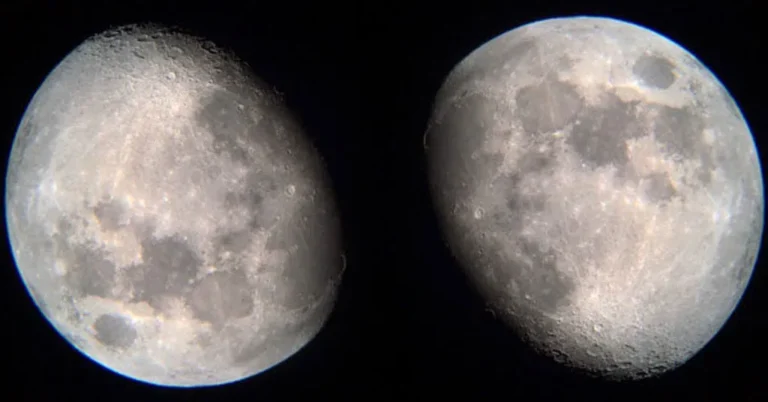How To Use A Telescope For Stargazing

You have done the research and picked your first telescope. And now you are wondering how to use this astronomy equipment to see celestial objects. You are ready to look at the objects in space up close for the first time and cannot wait to show your siblings and friends the rings of Saturn.
As a beginner, you try to understand your telescope’s moving parts. You might be overwhelmed by learning new telescope technology. The function of a telescope may be straightforward, but successfully observing celestial objects for the first time requires a bit of knowledge.
Top 10 Must-See Astronomical Objects for Backyard Stargazers

You can witness the twinkling star with your naked eye. But those who want to dive into deep space need an instrument called a telescope. And know the celestial objects’ location and time when they are seen in the sky.
Here are 10 fascinating celestial objects you can observe with a backyard telescope
The moon: the moon was our childhood companion. We have been observing the moon since we were children. We can observe the craters, mountains, and other details on the moon. We will witness the different phases of the moon. Observation will be easy because the moon is visible throughout the night.
The Andromeda Galaxy (M31): The Andromeda Galaxy is the nearest spiral galaxy to our Milky Way. It is a breathtaking sight. It looks like a faint and fuzzy patch of light in the sky to the naked eye. But through a telescope, you can observe its spiral arms and central bulge. The best time to watch the Andromeda galaxy is during fall and winter nights. When it is highest in the night sky
The Orion Nebula (M42) is located in the Orion constellation. It is a giant cloud of gas and dust where new stars are born during winter. You can observe the nebula’s structures, including the trapezium cluster, a group of young and hot stars.
The Pleiades (M45): In the Taurus constellation, you can observe an open cluster of stars called the Pleiades. It is also known as the seven sister stars. It looks like a tiny group of stars with your naked eyes. But with a telescope, you see dozens of stars, some with different colors. You can observe the Pleiades throughout the year, but they are more prominent in winter.
The Ring Nebula (M57): In the constellation Lyra, you can see a planetary nebula. It is an expanding shell of gas and dust ejected from a dying star. With your telescope, you can observe the nebula’s ring. That gives his name. You can easily keep the Ring Nebula in the summer season.
The Double Cluster (NGC 869 & NGC 884) is located in the Perseus constellation. Its name is a pair of open clusters that appear close in the dark sky. With your powerful telescope, you can see all the thousands of stars in these clusters. Winter is the best season for observing these clusters at night.
Jupiter: it is the most giant planet in our solar system. You can easily observe Jupiter with your telescope. You can see its four moons, Io, Europa, Ganymede, and Callisto, as well as the cloud of gas near its surface and the red spot on it. We can observe it throughout the year, but the golden time is when it is opposite to the sun in the sky.
Saturn: The second largest planet in our solar system is Saturn. It is a famous planet for its beautiful rings. Telescopes allow us to observe its ring, Structure, and gaps. Sometimes, you can also see the moon of Saturn, such as Titan and Rhea. Like Jupiter, Saturn is visible throughout the year, but we can observe it when it is opposite the sun.
Mars: The Red Planet will be our second home for humans and neighbor stars of planet Earth. We will live there in the future, but you can now observe it through your telescope. We can see its polar cap, dark areas on the surface, and even dust storms. The golden time of observation is when it is opposite to the sun. Which occurs every two year
Venus: Venus is the neighbor planet of Earth. However, Venus is often hidden by its atmosphere. But with a telescope, we can observe its phases, similar to the moon’s. Venus is only visible in the early morning or evening sky. Depending on its phases.
Maximizing Your Stargazing Experience
Your backyard telescope opens the windows in deep space. But you need experience and knowledge to start stargazing.
- Choosing the Right Location: Light pollution is the enemy of stargazers. You need to escape the lights of cities and find a dark place with an open view of the sky. Like parks and light-free areas.
- Equipment Based on Budget: start your stargazing with a simple telescope. That comes in your budget. A refractor telescope is best for the observation of planets and moons. For smooth operation, you need a tripod. When you progress, you must invest in filters and eyepieces for different magnifications.
Exploring Planets Through a Telescope

If you want to explore planets through a telescope, you need to identify planets first. All planets appear in a pattern. Use star charts and apps to locate them in the dark sky. And also you have to know about the unique sites of planets. Like the great red spot on Jupiter, the iconic rings of Saturn, polar ice caps on the surface of Mars, and phases of Venus like the moon
Mastering Deep Space Observation
Locating Deep Space Objects: The celestial objects are faint and require a darker sky and experience to find them. Use star charts and mobile applications to locate these objects. You can easily find brighter objects like the Orion Nebula.
Tackling Common Challenges:
Here are the common challenges facing telescope users.
Focusing: Two central knobs are mainly used for concentrating coarse and fine focus. We use coarse knobs for large focusing and fine knobs for small precise focusing.
Alignment: for accurate celestial object tracking, align your telescope with the North star (in the northern hemisphere) or the Southern star ( in the southern hemisphere)
Light pollution: White light pollution is a villain for observation of faint objects. You need a special filter to overcome this problem.
Discovering the Beauty of Double Stars and Variable Stars:
Double stars: two stars are orbiting each other. But you can see it as a single point with the naked eye. While through a telescope, you can observe two separate points of light, sometimes with different color
Variable stars: A star whose brightness and characteristics may change over time is called a variable star. You can find it by collaborating with local astronomy clubs and starting to observe different types of telescopes.
Using Technology to Enhance Your Stargazing Experience

If you are a newbie and have yet to gain past experience in astronomy, then you should take advantage of new technology.
Mobile applications: many applications help to identify celestial objects and point your telescope. Work on real-time sky information.
Astronomy software allows you to plan the observation session. Give direct access to real-time sky information that helps you to locate faint objects barely visible through the naked eye.
We can contact other stargazers and share information. You can also learn from experts through online forums and astronomy clubs.
From Amateur to Expert
We know you are grown-up stargazers more fabulous in the sky. Here are some excellent ways you can explore the universe further.
You can take pictures just like you take photos of your favorite toys in childhood with your cameras. Use unique cameras and telescopes to close-up looks at planets and galaxies and save their pictures for everyone to see
Stars tell stories, but they whisper. You can use a ” spectroscope ” tool to listen to the starlight. This tool helps you understand the object you are looking at. Just like a detective uses clues to solve a mystery.
Meteor Shower Party: have you ever seen shooting stars? Some times. There are star parties in the sky with many shooting stars called meteor showers. You can use particular websites and applications to predict when these parties will happen and where they will be located.
Join local communities: as you love to play with friends, you can work with experts on special projects. You can use the internet to connect with other visual astronomers worldwide and exchange information with each other.
Conclusion
Suppose you are a newbie in stargazing. There are many things to learn. With patience, you can open a window in your backyard to explore the universe through a telescope. You can see the moon’s craters, the galaxy’s dust clouds, and stars’ clusters.
FAQs
How to use a telescope to see the moon?
To use a telescope for the moon, aim the telescope towards the moon and adjust the focus until the surface appears crisp and clear. You can also use a Barlow lens to increase the magnification of your eyepiece, allowing you to see more detail on the lunar surface.
How to use a telescope for stargazing for beginners ?
Stargazing with a telescope starts with setting up the instrument properly and aligning it accurately. Once set up, you can use a star chart or planetarium app to identify specific celestial bodies and then use the telescope to observe them.
How to use a telescope at night ?
Using a telescope at night requires patience and attention to detail. Make sure to dress appropriately for the cold temperatures, and use a red filter or red cellophane over your smartphone screen to avoid damaging your eyes.
How do you see stars with a telescope?
Seeing stars with a telescope is similar to regular stargazing, except you’ll be able to see more detail and clarity thanks to the increased magnification provided by the telescope.
Can you stargaze with a telescope?
Yes, you can stargaze with a telescope. Follow the instructions outlined earlier to set up the telescope, align it with the stars, and then use the eyepiece to observe various celestial bodies.






